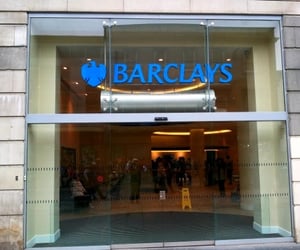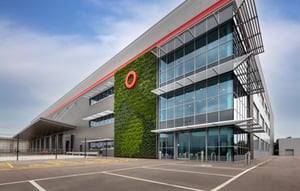BlackRock Income and Growth Investment Trust plc (LON:BRIG) has announced its latest portfolio update.
For more information on the BlackRock Income and Growth Investment Trust and how to access the opportunities resented by the income and growth sector, please visit: www.blackrock.com/uk/brig
All information is at 28 February 2022 and unaudited.
Performance at month end with net income reinvested
| One Month | Three Months | One Year | Three Years | Five Years | Since 1 April 2012 | |
| Sterling | ||||||
| Share price | -4.6% | -2.0% | 10.0% | 6.9% | 9.4% | 93.1% |
| Net asset value | 0.4% | 4.7% | 14.6% | 17.9% | 22.0% | 100.8% |
| FTSE All-Share Total Return | -0.5% | 3.8% | 16.0% | 18.4% | 25.7% | 97.0% |
| Source: BlackRock |
BlackRock took over the investment management of the Company with effect from 1 April 2012.
At month end
Sterling:
| Net asset value – capital only: | 202.90p |
| Net asset value – cum income*: | 204.02p |
| Share price: | 178.00p |
| Total assets (including income): | £47.5m |
| Discount to cum-income NAV: | 12.8% |
| Gearing: | 4.6% |
| Net yield**: | 4.0% |
| Ordinary shares in issue***: | 21,321,283 |
| Gearing range (as a % of net assets): | 0-20% |
| Ongoing charges****: | 1.2% |
* Includes net revenue of 1.12 pence per share
** The Company’s yield based on dividends announced in the last 12 months as at the date of the release of this announcement is 4.0% and includes the 2021 interim dividend of 2.60p per share declared on 23 June 2021 and paid to shareholders on 1 September 2021 and the 2021 final dividend of 4.60p per share declared on 13 January 2022, with pay date 17 March 2022.
*** excludes 10,081,532 shares held in treasury.
**** Calculated as a percentage of average net assets and using expenses, excluding performance fees and interest costs for the year ended 31 October 2021.
| Sector Analysis | Total assets (%) |
| Support Services | 13.9 |
| Pharmaceuticals & Biotechnology | 8.8 |
| Household Goods & Home Construction | 7.9 |
| Mining | 7.4 |
| Media | 7.1 |
| Life Insurance | 6.3 |
| Oil & Gas Producers | 6.2 |
| Financial Services | 5.4 |
| Banks | 4.9 |
| Nonlife Insurance | 3.9 |
| Tobacco | 3.7 |
| Electronic & Electrical Equipment | 2.7 |
| Travel & Leisure | 2.6 |
| Food & Drug Retailers | 2.5 |
| Food Producers | 2.3 |
| Health Care Equipment & Services | 2.1 |
| Personal Goods | 1.6 |
| General Retailers | 1.5 |
| Electricity | 1.3 |
| Fixed Line Telecommunications | 1.2 |
| Software & Computer Services | 0.9 |
| Real Estate Investment Trusts | 0.8 |
| Industrial Engineering | 0.8 |
| Net Current Assets | 4.2 |
| —– | |
| Total | 100.0 |
| ===== |
| Country Analysis | Percentage |
| United Kingdom | 88.9 |
| United States | 3.9 |
| France | 3.0 |
| Net Current Assets | 4.2 |
| —– | |
| 100.0 | |
| ===== | |
Top 10 holdings | Fund % |
| AstraZeneca | 7.0 |
| Shell | 5.4 |
| Rio Tinto | 5.3 |
| RELX | 5.1 |
| Reckitt Benckiser | 4.6 |
| British American Tobacco | 3.7 |
| Legal & General Group | 3.3 |
| 3i Group | 3.2 |
| Phoenix Group | 3.0 |
| Standard Chartered | 2.9 |
Commenting on the markets, representing the Investment Manager noted:
Performance Overview:
The Company returned 0.4% during the month, outperforming the FTSE All-Share which returned -0.5%.
A combination of hawkish pivots by developed market central banks and mounting jitters over Russian-Ukraine tensions dominated volatile equity markets during February where investor sentiment was firmly risk-off.
Inflationary expectations and rising rates were the main theme in the first part of the month; the Bank of England raised rates by another 25 bps and U.S. headline inflation data was higher-than-expected.
Confirmation that Russian forces launched a military operation in Ukraine late in the month pushed the oil price through $100/barrel and drove US Treasury yields and equities lower. Russia’s currency and markets fell sharply on the swift announcement of Western sanctions in response to the invasion of Ukraine.
The FTSE All Share fell -0.5% during February with Basic Materials, Utilities, and Health Care outperforming while Financials, Technology and Industrials underperformed.
Stocks:
The top positive contributor to the performance of the Company during the month was Oxford Instruments which saw a bid from Spectris. The mining sector performed strongly during the period thanks to strong cash returns, confidence around China’s outlook and tightness in commodity markets. As a result, the holdings in Rio Tinto and BHP were top positive contributors to the returns of the Company during the month. Drax also contributed positively as a beneficiary of elevated power prices.
Given the risk- off environment, more cyclical stocks were weaker during the month. This included holdings within the Financials sector where the likes of Phoenix Group and Mastercard detracted from performance. Electrocomponents also fell due to weakness in the Industrial sector despite having delivered a strong trading update.
Portfolio Activity:
After the announcement of the Russian invasion of Ukraine, we reduced our holding in BP given its large stake in Rosneft, the Russian state oil giant, while adding to Shell. We reduced our Consumer exposure by selling Next and we took down US exposure with our sale of Analog Devices.
We continue to approach the year with caution and balance given the difficult circumstances with many moving parts. We’ve been positively surprised with reporting thus far with the vast majority of companies displaying strong characteristics and cash generation under a difficult backdrop.
Outlook:
We are conscious that, at the time of writing, there is a significant conflict and human suffering. Whilst we reference the investment implications of this, we recognise there are also tremendous implications for humanity. The Russian invasion of Ukraine has contributed to not just the volatility of 2022, but also the range of outcomes. The backdrop for global equities therefore, in our view, is mixed. Although demand remains strong, the outlook for corporate revenue and earnings growth is likely to worsen over the course of 2022 as the potential negative jaws of rising oil prices and rates, raises the spectre once again of Stagflation. It is still likely that government stimulus is retracted and monetary policy is tightened in the face of more persistent inflationary pressures. It will be incredibly important to focus on companies with strong, competitive positions, at attractive valuations that can deliver in this environment.
Central banks, universally across the developed world, have started the year in a far more hawkish manner and as a result, market expectations for higher rates and faster quantitative tightening have risen considerably. Time will tell whether the conflict impacts the growth outlook and therefore the hawkishness of central banks. It is also more likely we will see increasingly divergent regional monetary approaches with the US being somewhat more insulated from the impact of the conflict, than for example Europe. We still do not know whether the current inflationary trends are the temporary impact from the significant Covid stimulus, the unwinding of extreme Covid behaviours, a more structural shift in the cost of labour, the impact on costs from the decarbonisation agenda or a combination of the above. It is difficult to have a high degree of confidence on the outcome but we would note, given the uncertainty, there is a rising risk of a policy mistake; either being too late to tighten and/or tightening too hard. We expect this, and the geopolitical ramifications of the Ukraine war, to be the prevailing debate of 2022 and beyond.
The strain on supply chains, caused by strong economic activity overwhelming Covid afflicted capacity and restricted labour availability, will continue to provide inflationary pressures which can squeeze companies’ margins. As a reminder, we continue to concentrate the portfolio on businesses with pricing power and durable, competitive advantages as we see these as best placed to protect margins and returns over the medium and long-term. However, a notable feature of our conversations with a wide range of corporates in 2021 was the ease with which they were able to pass on cost increases and protect or expand margins. Management teams have pointed to robust demand, prioritisation of security of supply as well as well-publicised supply chain disruption and cost pressures. However, we believe that as some of the transitory inflationary pressures start to fade (e.g. commodity prices, supply chain disruption) then pricing conversations will become more challenging. We are also increasingly focused on wage inflation which may be more structural and yet, in our experience, harder to pass on. Corporates have already pointed to wages picking up, the introduction of bonuses and growing pressure on employee retention rates as competition for labour intensifies. We therefore believe that employee retention will be an important differentiator in 2022 given the productivity benefits of a stable workforce as labour market tighten further.
We also note the UK’s relative valuation discount to global equity markets has continued to widen over the course of 2021, despite the resurgence in takeover activity as bidders capitalise on this arbitrage. Specifically, we’ve seen acquisitions of real assets and a desire to find unlevered free cash flow. As we move into 2022, we see cash generation continuing to improve and dividends payments recovering; broadly speaking we’ve been surprised by how quickly dividends have come back with large contributions from the mining sector where the likes of Rio Tinto and BHP have been able to pay large special dividends. While most companies are paying dividends once more, we note the large contribution from special dividends that may not persist. That said, as the highest dividend yielding market in the developed world, we see the fundamental valuation of the UK as attractive. We also view the outlook for ordinary dividends for the UK market with optimism as most companies have emerged from the Covid crisis with appropriate dividend policies.
We continue to have conviction in cash generative companies with durable competitive advantages, exceptional management teams and underappreciated growth potential. At present, whilst we are excited by the attractive stock-specific opportunities on offer, we continue to approach the year with balance in the portfolio.
For more information on the BlackRock Income and Growth Investment Trust and how to access the opportunities presented by the income and growth sector, please visit: www.blackrock.com/uk/brig





































